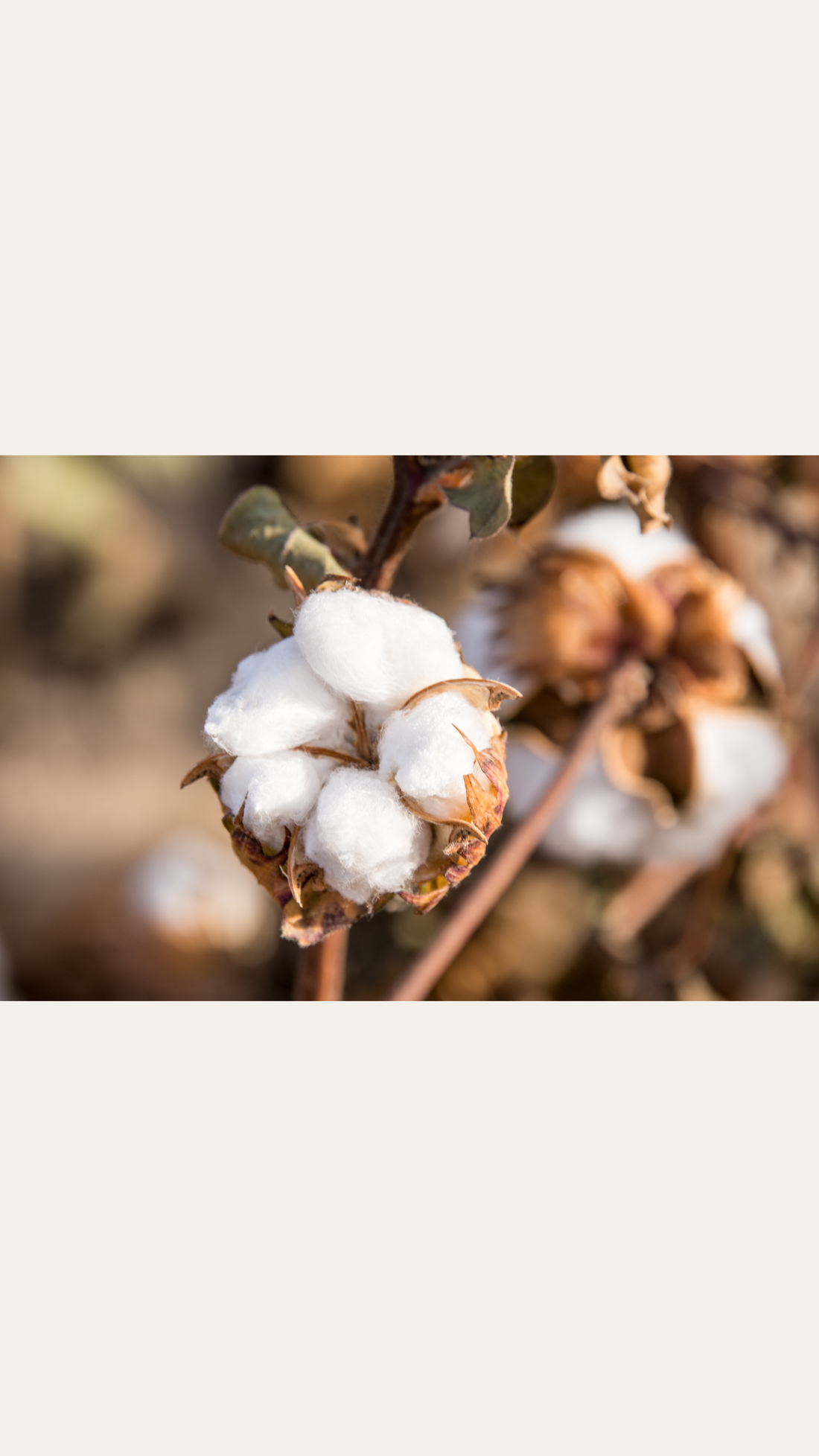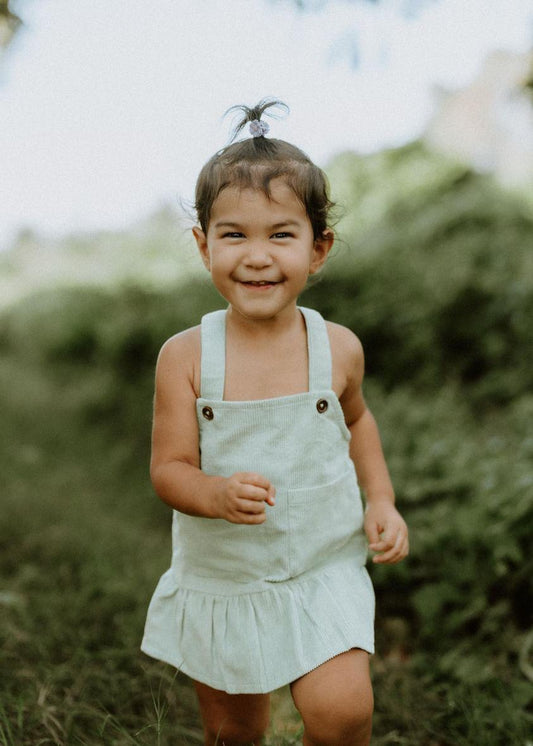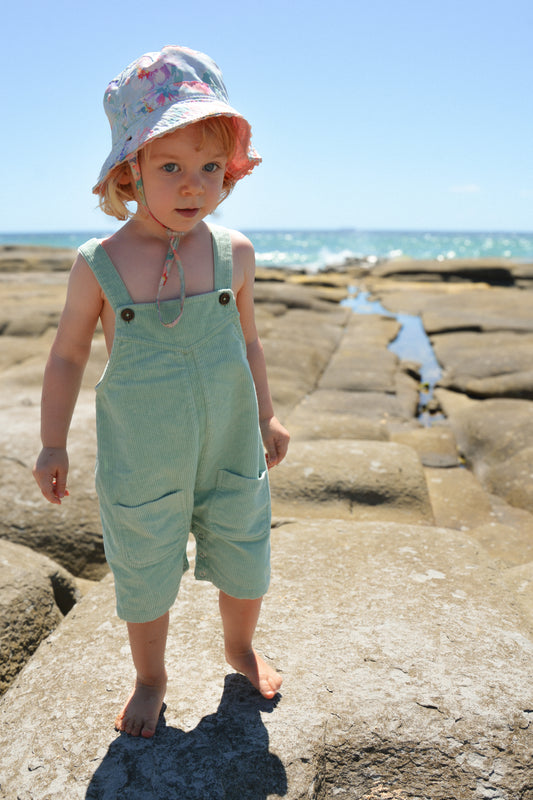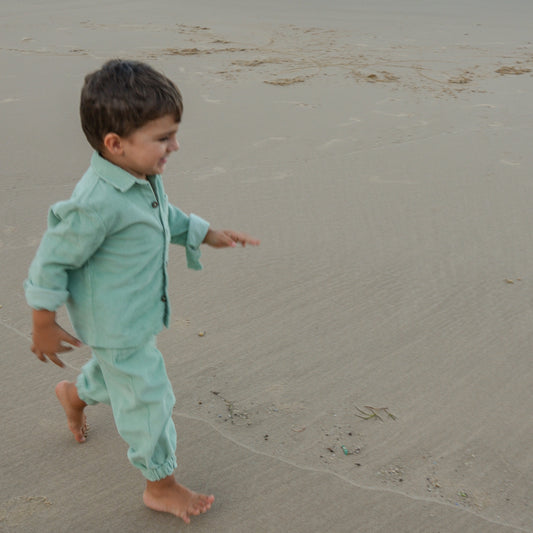
Are these three fabrics safe for your baby?
Share
When I began to look into fabrics to find the best possible option for Green Reef CO., I had made assumptions that certain fabrics are safe and somewhat sustainable.
I wasn’t aware of a few of the factors before this, even though I had lived a more eco conscious life for many years at this stage. Some of these assumptions would include, that baby clothing is safe for babies, just like baby foods and all products, simply because they are products for babies. What I realised then, is that this unawareness is further spread than just my own experiences.
WHEN YOU KNOW BETTER, YOU DO BETTER
I truly believe in this, no matter how long the process might take to make the switch. And that’s ok! Let’s get into the details of these three fabrics, that are commonly used for baby clothing.
But are these materials really safe for your baby?
BAMBOO, OH BAMBOO!
When you first feel a piece of bamboo clothing it feels soft, gentle on your skin and you can almost feel how breathable it is. At first glance this seems like a great option for clothing, whether its for yourself or your baby. Bamboo is a grass that grows quickly, requires little water and actually improves soil quality. That is what we often hear and read, although it seems we are missing an important information about this soft fabric: its chemical manufacturing process.
Bamboo often requires large amounts of additives like toxic chemicals and bleach.
The positive qualities of bamboo has allowed many companies to use bamboo as a cover for greenwashing. Whilst it is a more environmentally friendly option than synthetic textiles such as polyester, the way bamboo is processed from plant to fabric is an issue for its wearers and our environment.
Bamboo can be processed in two ways: mechanically or chemically. In the mechanical process, the bamboo plant is crushed, and its fibers are combed out and spun, similar to how hemp or linen are produced. However, this method is less common because it is labor-intensive, time-consuming, and more costly compared to the chemical processing of bamboo.
The chemical processing of bamboo typically requires a range of additives, including carbon disulfide and bleach. During this process, the bamboo is "cooked" in a lye solution and treated with sodium hydroxide. The textile is then soaked in sulfuric acid and washed with bleach.
Chronic exposure to these chemicals can cause damage to the nervous system. Additionally, the chemical processing of bamboo can negatively affect the health of workers and also have significant environmental impacts. Considering these factors, bamboo isn’t the best option for your baby, if you are looking for safe and natural clothing.
COTTON - HOW “CLEAN” IS CONVENTIONAL COTTON?
Cotton is the most widely produced natural fiber on the planet. Almost all parts of the cotton plant are being used - its leaves, seeds and other remaining plant material. And that is fabulous!
Cotton is soft, absorbent and breathable, making it a great material for any clothing worn close to the skin. In the fashion industry, cotton ranks as the second most utilized fabric, following polyester. Extracted from the cotton plant, cotton is a natural and renewable material. We love that!
However, traditional, non-organic cotton production comes with numerous environmental and health effects. The growth of conventional cotton requires the use of GMO’s, pesticides, subsequently causes chemical runoff and uses a lot of water.
TO BE PRECISE - 2,700 LITERS ARE USED TO MAKE ONE SHIRT
How does this effect our environment? The “water running off” the land toward streams, rivers and lakes, moves chemicals, pesticides and fertilizers, which cause irreversible damage to the land, and even our groundwater.
Unsustainable farming practices cause unhealthy crops and the usage of chemicals and genetically modified organisms (GMO’s) is necessary throught the entire process is required to keep the farm afloat. To break it down:
In addition, the whitening of cotton fabric typically involves chlorine bleaching, and synthetic surfactants are applied during the final stages. And the use of heavy metals and sulfur in fabric dyeing and printing may be the reason for your skin allergies, rashes, and respiratory problems, as these substances are being absorbed through your babies and your skin. This doesn’t sound great!
The production of conventional cotton often overlooks stringent checks on factory conditions and lacks accountability. Issues such as child labor and inadequate wages are often the case, and the production methods can negatively impact the farmers and their worker’s health
BETWEEN 1995 - 2018, ALMOST 400,000 FARMERS COMMITED SUICIDE IN INDIA ALONE
When it comes to the fashion industry, the drive to produce clothing as quick and as cheap as possible leads to worker exploitation and has significant environmental impacts.
To come back to our question - Is conventional cotton clean? We don’t think so, not for you and especially not for your baby.
ORGANIC COTTON - IS THERE REALLY A DIFFERENCE?
When you first question the difference between organic cotton vs. conventional cotton, you may think it is grown the same, feels the same and possibly has similar environmental impacts. However, there are some significant differences in their cultivation.
Organic cotton farming is a more sustainable method compared to traditional cotton, primarily because it is less resource-intensive and more environmentally friendly. Organic cotton uses up to 91% less water than non-organic cotton, due to 80% of its crops being rainfed rather than relying on irrigation. This significant reduction in water use is possible because organic cotton is grown in rotating locations, which maintain soil health and reduce the need for excessive water.
In addition to water conservation, organic cotton farming uses 62% less energy and produces 46% less greenhouse gas emissions. This is achieved by avoiding synthetic fertilizers and pesticides, which not only release harmful nitrogen dioxide into the atmosphere but also degrade soil quality. Instead, the soil in organic cotton fields acts as a carbon sink, absorbing CO2, and reducing the overall carbon footprint.
Organic methods also prohibit the use of genetically modified seeds and instead employ beneficial insects to control pests, promoting a natural balance within the ecosystem. The avoidance of toxic pesticides reduces water pollution by up to 98% and mitigates health risks to farmers, who otherwise might suffer from exposure to chemicals or incur debt from purchasing them.
Overall, the practice of organic cotton farming not only supports environmental sustainability but also benefits the social and economic well-being of farmers.
Organic cotton under GOTS certification involves natural, GMO-free seeds, healthy soil, and the use of natural defoliation during harvest. The dyes used are low-impact, devoid of heavy metals or sulfur, which are common in many ‘conventional organic’ products. Choosing organic cotton provides peace of mind, as the fabric is free from harmful chemicals and endocrine disruptors.
GOTS stands as a global leader in textile standards for organic fibers, ensuring that each certified product is produced in a socially and environmentally responsible manner through strict regulations across the supply chain. The entire production process, from seed to garment, is transparent and audited. And who doesn’t like transparency?
Let’s look back at the main differences between ORGANIC COTTON vs CONVENTIONAL COTTON.
I think we agree, that there IS a huge difference and we couldn’t chose any other fabric than 100% GOTS certified organic cotton for your baby! What do you make of this? We would love to hear your opinion!
If you enjoyed this article give us a follow at @greenreefco, and subscribe to our newsletter for exclusive offers, and more interesting articles about sustainable living and the Green Reef Initiative.








